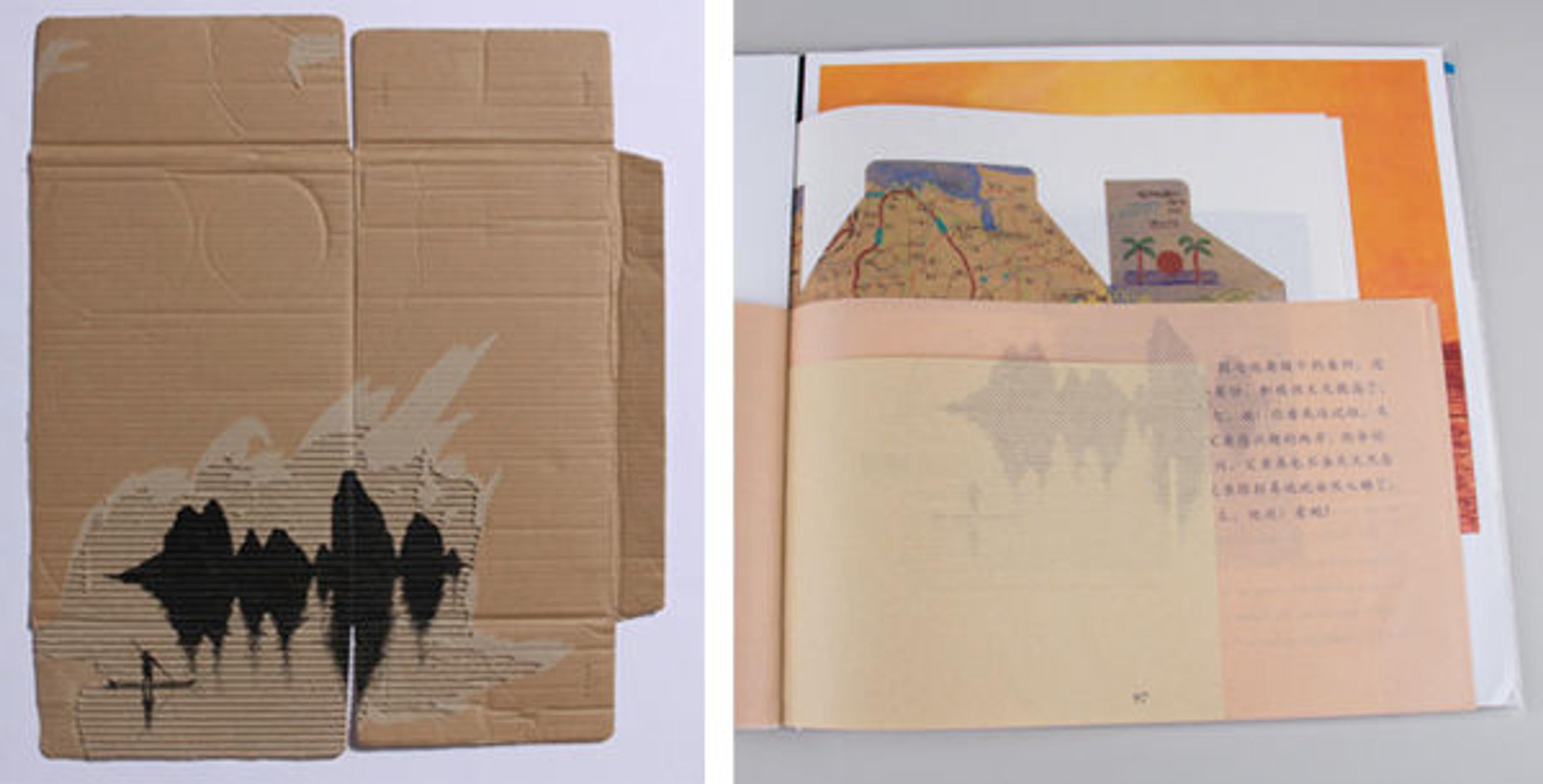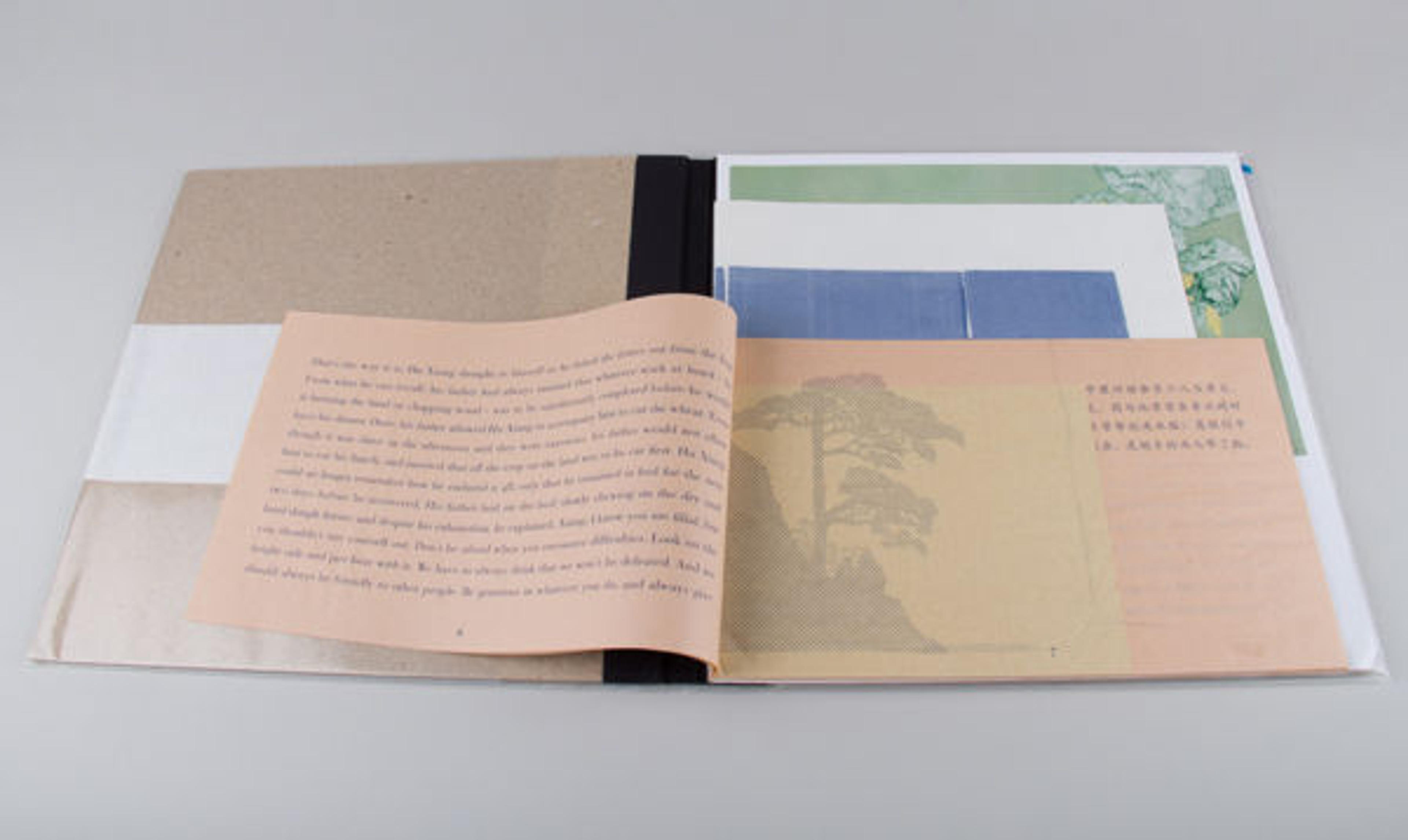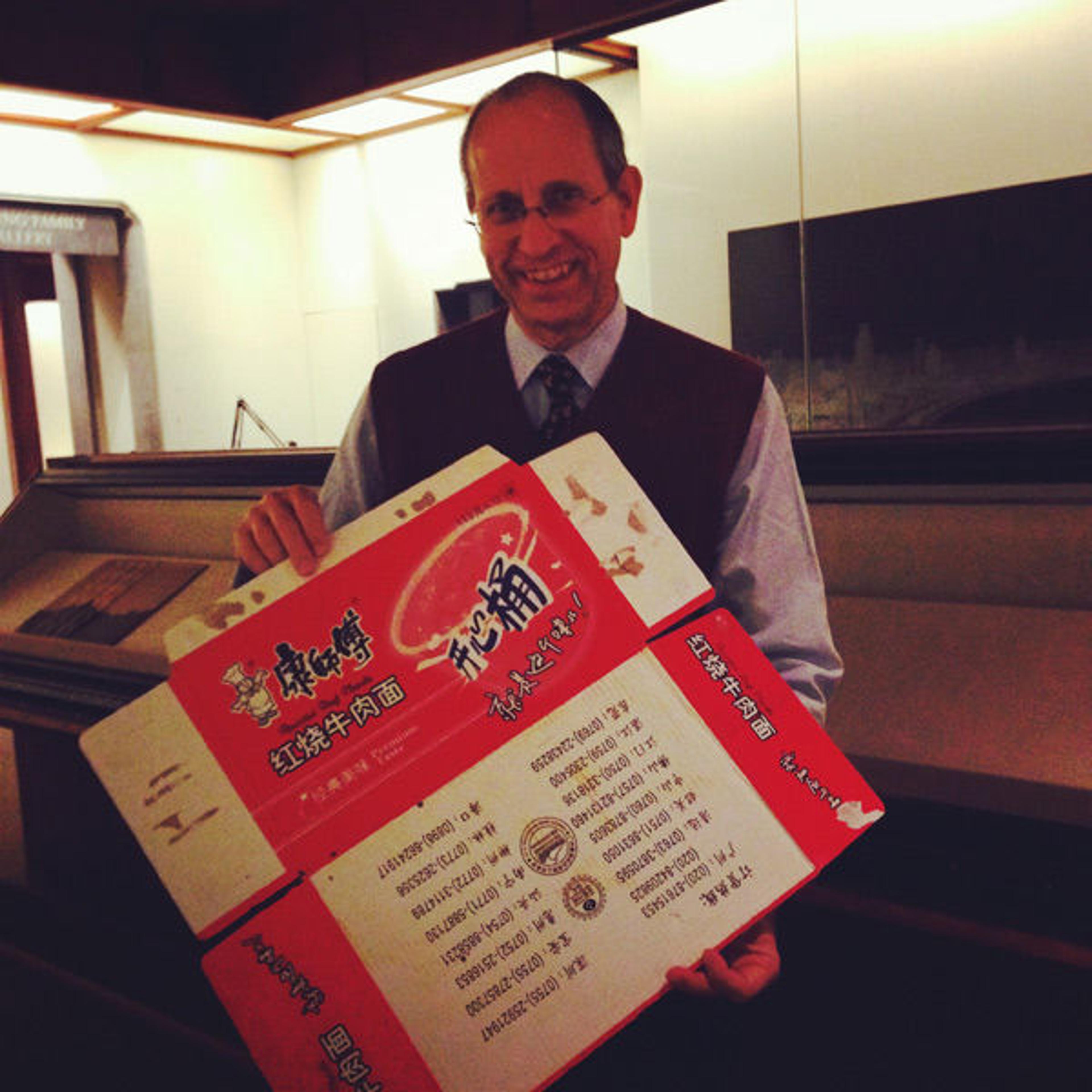
Left: Duan Jianyu. Beautiful Dream 4, 2008. China. Ink on cardboard; 17 1/4 x 13 in. (43.8 x 33 cm). Lent by the Sigg Collection. Right: Spread featuring the same Guilin motif from Duan Jianyu, New York Paris Zhumadian 纽约巴黎驻马店 (Guangzhou: Vitamin Creative Space, 2008), p. 97.
«Duan Jianyu's Beautiful Dream series (2008), currently displayed in the exhibition Ink Art: Past as Present in Contemporary China, showcases clichéd renderings of tourist attractions and scenic Chinese landscapes on flattened cardboard boxes. The charming naiveté of the silhouetted forms belies her witty treatment of the banal subjects and materials: soda-can rings reinforce the Great Wall's bulk, and an exposed area of corrugation simulates rippling water, animating an otherwise bland Guilin representation where the distinct Karst mountain forms are typically shown with reflections in the Li River. By playing with these surface particularities, the artist seems to celebrate the cardboard's well-worn materiality rather than merely exploiting its symbolism to critique consumer culture.»
In addition, the Beautiful Dream drawings serve a functional purpose in Duan's artist's book New York Paris Zhumadian (2008), which features a novella and other pieces from the series— drawings of maps and popular travel destinations such as Mount Fuji, Venice, and Copenhagen. Duan's fiction, inspired by a real news story, revolves around Hu Xiang, a college student from an underprivileged rural family who cares for his paralyzed father in the school dorm. To assuage the old man's loneliness, Hu initiates a daily ritual in which the two men imagine traveling together to famous tourist attractions far beyond their much constrained reality. These sessions of collaborative storytelling are facilitated by Hu's amateur drawings on found cardboard boxes and are occasionally annotated with the names of local delicacies and other not-to-be-missed experiences.

Cover of Duan Jianyu's New York Paris Zhumadian 纽约巴黎驻马店
We are provided with the very same visual guides when flipping through the artist's book, now part of the growing collection of contemporary Asian art resources in the Met's Thomas J. Watson Library. Reproduced with a minimal elegance, the Beautiful Dream pictures by Duan Jianyu—and thereby her protagonist Hu Xiang—not only interact with the narrative but also enrich our experience of it, since the book is bound in such a way that text and image, printed on pages of varying size and texture, constitute a layered, subtly changing bookscape.
While installing Ink Art, we were able to find out what the cardboard boxes once contained: Master Kong instant noodle bowls that were once ubiquitous on passenger trains; Nongfu Shanquan, a Chinese equivalent of Poland Spring; and Jianlibao, a soft drink that rivaled Coca-Cola in popularity in the 1990s. These discoveries gave me a pang of nostalgia at the realization that the datedness of these once-dominant brands mirrors that of the images Duan has chosen to appropriate. For instance, the "Welcoming-Guest Pine" appropriated in Beautiful Dream 7 had once prevailed as a decorative motif in homes and office spaces.

Duan Jianyu. Beautiful Dream 7, 2008. China. Ink on cardboard; 11 1/2 x 17 1/4 in. (29 x 44 cm). Lent by the Sigg Collection

Spreads featuring the same Guilin motif from Duan Jianyu, New York Paris Zhumadian 纽约巴黎驻马店 (Guangzhou: Vitamin Creative Space, 2008), pp. 6, 7.
These images have remained familiar despite their dwindling visibility in popular culture, and have come to signify a particular moment in material culture lasting roughly from the mid-1990s to mid-2000s, when average Chinese households were growing affluent enough to become avid consumers of goods and tourism. In the meantime, they speak to the endearing qualities of mundane things, as well as how utter clichés can piece together an authentic experience of lived time in collective memory. The vivid, elaborate details Hu Xiang and his father have produced for their flights of fancy certainly can testify to the transformative magic of these shoddy yet intimate pictures.

Mike Hearn, Douglas Dillon Chairman of Asian Art and curator of Ink Art, exposes the other side of Beautiful Dreams 4 during the exhibition's installation.